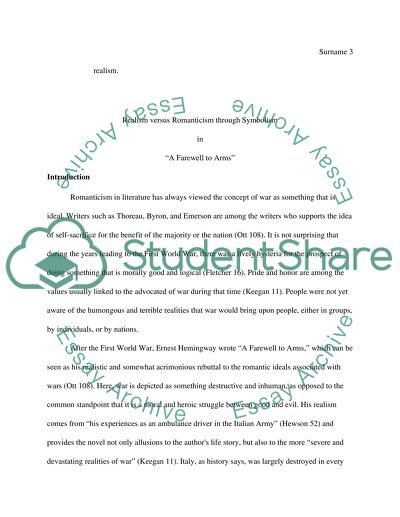Cite this document
(“Realism versus Romanticism through Symbolism in A Farewell To Arms Research Paper”, n.d.)
Realism versus Romanticism through Symbolism in A Farewell To Arms Research Paper. Retrieved from https://studentshare.org/literature/1436370-a-farewell-to-arms
Realism versus Romanticism through Symbolism in A Farewell To Arms Research Paper. Retrieved from https://studentshare.org/literature/1436370-a-farewell-to-arms
(Realism Versus Romanticism through Symbolism in A Farewell To Arms Research Paper)
Realism Versus Romanticism through Symbolism in A Farewell To Arms Research Paper. https://studentshare.org/literature/1436370-a-farewell-to-arms.
Realism Versus Romanticism through Symbolism in A Farewell To Arms Research Paper. https://studentshare.org/literature/1436370-a-farewell-to-arms.
“Realism Versus Romanticism through Symbolism in A Farewell To Arms Research Paper”, n.d. https://studentshare.org/literature/1436370-a-farewell-to-arms.


